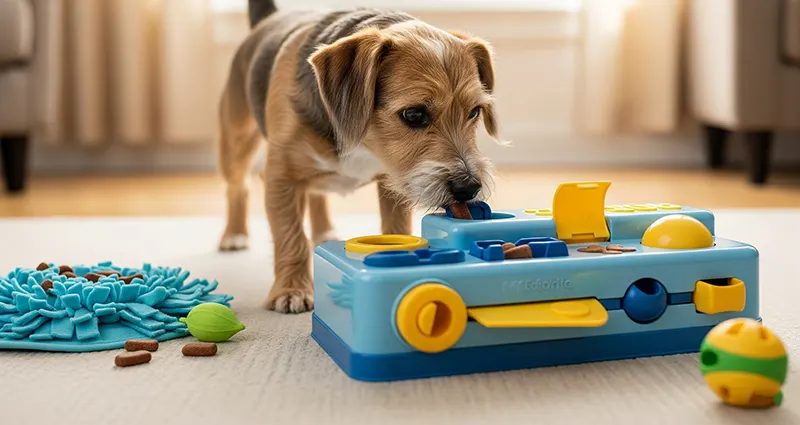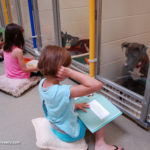Separation anxiety is a common issue affecting many small dogs, leading to stress and destructive behaviors when their owners are away. One effective way to ease anxiety and provide mental stimulation is through interactive puzzle toys for small dogs with separation anxiety. These toys engage dogs’ minds, distract them from their stress, and encourage positive coping mechanisms, making alone time more manageable and enjoyable.
Understanding Separation Anxiety in Small Dogs
Separation anxiety manifests as distress when a dog is separated from their owner or left alone. Small dog breeds can be especially prone to this due to their strong attachment bonds and heightened sensitivity. Symptoms may include excessive barking or whining, destructive chewing, pacing, and attempts to escape.
While training and behavior modification remain primary tools, environmental enrichment with interactive toys plays an important supporting role in alleviating anxiety.
Benefits of Interactive Puzzle Toys for Dogs with Separation Anxiety
- Mental Stimulation: Challenge your dog’s problem-solving skills, keeping their minds active and engaged.
- Distraction: Redirect attention away from anxious behaviors toward a constructive activity.
- Slower Food Consumption: Many puzzle toys double as food dispensers, encouraging slower eating and prolonging engagement.
- Stress Reduction: The focus and satisfaction from solving puzzles can help reduce cortisol levels and promote calmness.
- Positive Reinforcement: Rewarding your dog through treats hidden in the toys builds confidence and associates alone time with positive experiences.
Top Types of Interactive Puzzle Toys for Small Dogs
1. Treat-Dispensing Toys
These toys release treats or kibble in response to specific actions like spinning, sliding, or pulling levers. Examples include the Kong Classic stuffed with peanut butter or foodie puzzles with compartments that open when manipulated.
2. Snuffle Mats
Snuffle mats are fabric mats with hidden pockets where treats can be scattered. Dogs use their noses to forage for food, mimicking natural hunting behavior that provides excellent mental engagement.
3. Hide-and-Seek Puzzle Boxes
These have multiple compartments that dogs need to open or slide to retrieve treats. They challenge dexterity and cognitive skills, perfect for small breeds with nimble paws.
4. Interactive Electronic Toys
Some toys move unpredictably or emit sounds to attract attention, prompting dogs to chase or paw at them. These can offer added stimulation for highly active or impatient dogs.
Choosing the Right Puzzle Toy for Your Small Dog
When selecting an interactive puzzle toy, consider:
- Size and Safety: Toys should be appropriately sized to prevent choking hazards and made of durable, non-toxic materials.
- Difficulty Level: Begin with simpler puzzles and gradually increase complexity as your dog learns.
- Ease of Cleaning: Toys that can be easily washed maintain hygiene and longevity.
- Treat Compatibility: Check that the toy works with your dog’s favorite treats or kibble size.
Tips for Introducing Puzzle Toys to Your Dog
- Start by demonstrating how the toy works using treats to spark interest.
- Supervise your dog initially to ensure safe and positive interaction.
- Use the toy during short absences initially, gradually increasing alone time.
- Combine toy use with calming routines such as soothing music or aromatherapy.
Interactive puzzle toys for small dogs with separation anxiety offer a practical and enjoyable way to mitigate stressful behaviors by providing mental challenges and rewarding distractions. Investing in quality puzzles tailored to your dog’s size and temperament can make alone times less daunting and promote happier, healthier pets. Alongside training and companionship, these toys are key tools in managing separation anxiety effectively.












